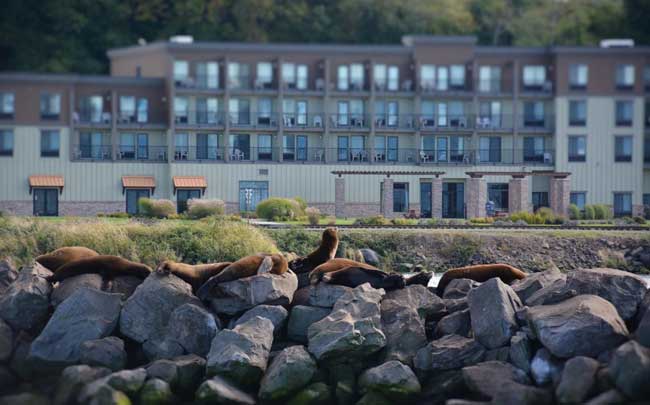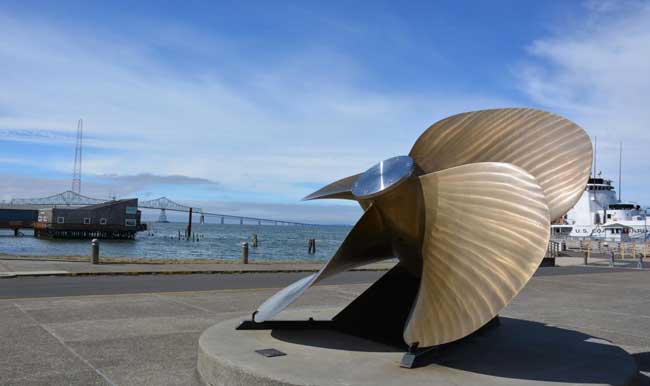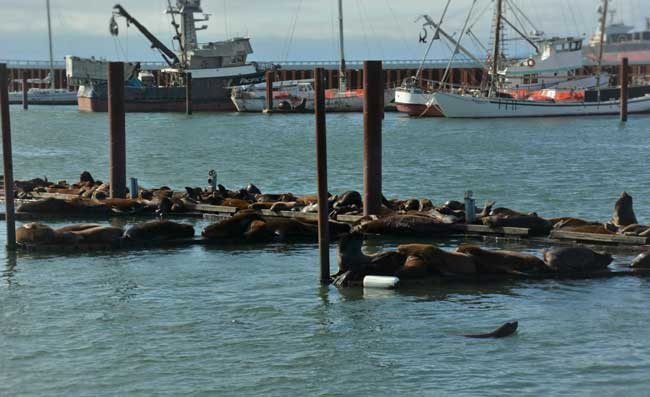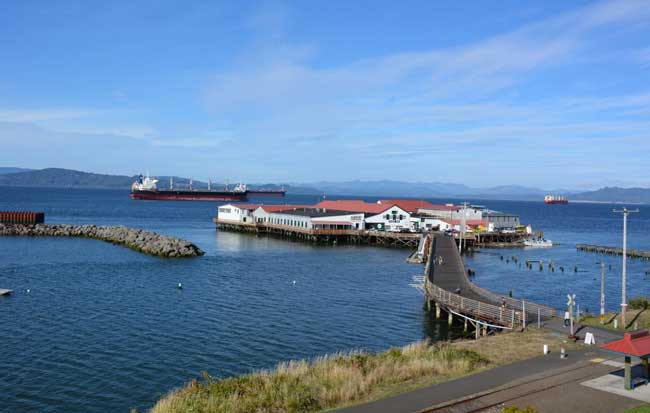

We are halfway through the second day of our drive down the Pacific Coast Highway (PCH). The sun has decided to stay behind the clouds and the wind seeps through my sweater reminding me we are in the Pacific northwest.
It doesn’t dampen my enthusiasm to continue our adventure, however. We are leaving Washington and heading into Oregon via the Astoria-Megler Bridge which stretches over the beautiful Columbia River.
I have heard the humpback whales were seen breaching recently, but I see nary a one. While absolutely beautiful, this area where the Columbia River meets the Pacific Ocean has one of the most dangerous sand bars in the world, the legendary Columbia River Bar.
The volume of water entering the Pacific combined with the force of impact of North Pacific storms can create a dangerous passage for ships. All vessels engaged in foreign trade are required by law to hire a specially trained Columbia River Bar Pilot to navigate the channel.

Columbia River Maritime Museum
Our first stop of the day is the Columbia River Maritime Museum in Astoria, Oregon, which several locals have recommended.
The museum’s helpful exhibits explain the extreme forces at work on the Columbia River Bar, where waves can exceed 40 feet in height during severe storms. The Maritime Museum has rotating exhibits, and today we see “A Peaceful Return-The Story of the Yosegaki Hinomaru.”
During World War II, Japanese Soldiers would carry with them a flag covered in signatures and wishes for a safe return. It was called Yosegaki Hinomaru. American soldiers would collect these flags from the bodies of the Japanese soldiers.
Decades later many American veterans and their families have realized the meaning these flags have to family members of the deceased soldiers. They are returning them. It is a beautiful story of healing. Visit https://www.crmm.org/ for the most current information regarding the museum.

Astoria was once known for fishing, fish processing and lumber. In 1945, there were about 30 canneries along the Columbia river. Wooden posts protruding from the floor of the Columbia River are all that remain of the canneries.
Today, after the decline of the fish processing and lumber industry, Astoria has a growing art scene, lighting industry and tourism. It’s a great place for us to stop for the night.
We pick a hotel with a view of the Columbia river. Upon checking into the hotel we are offered earplugs. Noise from sea lions? Now you don’t hear that every day.
Sure enough, the sea lions have taken over part of the dock right next to our hotel. Unlike the harbor seals we have seen, sea lions do not quietly bask in the sun.

Dining options abound here in Astoria, but we pick Bridgewater Bistro owned by Tony and Ann Kischner. They opened the Bistro nine years ago in the Red Building, a former repair shop built in 1896 for a cannery company.
Every table in the restaurant has a view of the Columbia River. It is beautifully restored and the views can’t be beat. I try the smoky tomato mac ‘n cheese with dungenous crab, delightful. My husband, more of a fan of the four-legged animal, tries the shoalwater cougar burger, with a unique blend of cranberry-blueberry mustard. Of course, I had to taste his dish as well. YUM!
It’s been a long and exciting day, and we’ll continue our drive tomorrow. We retire for the night to faint sounds of the sea lions and for once I am glad I am a little hard of hearing.

Tips: It can be a bit windy near the port, so dress accordingly. If you decide to eat at Bridgewater Bistro, make a reservation to ensure you get a table. Lastly, please do not try to pet the sea lions. Visit https://visittheoregoncoast.com/ for more information regarding activities, lodging and dining in Astoria.
This is part three in our continuing series on Traveling the Pacific Coast Highway.
- Dealing with Ear Popping and Pressure: Travel Health - February 15, 2024
- Christmas Ornaments for Travelers: Gifts for Travel Lovers - December 20, 2021
- Preparing to Live and Work from Your RV - January 30, 2021
